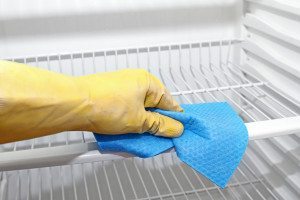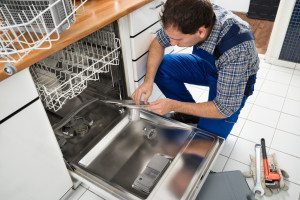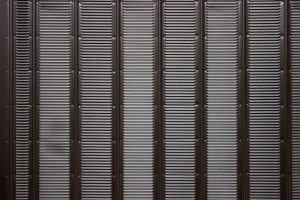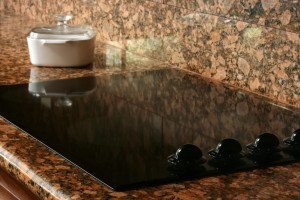 Refrigerator maintenance and cleaning may not be high on your to-do list, but maybe it should be! A common mistake homeowners make is skipping refrigerator cleaning and periodic maintenance. No matter how hard you try to keep your favorite kitchen appliances spot cleaned, a full-scale attack is necessary every so often. If it’s been a while (or forever) since you’ve really cleaned your refrigerator, the following tips and tricks are bound to inspire you to don your gloves and line up your cleaning materials.
Refrigerator maintenance and cleaning may not be high on your to-do list, but maybe it should be! A common mistake homeowners make is skipping refrigerator cleaning and periodic maintenance. No matter how hard you try to keep your favorite kitchen appliances spot cleaned, a full-scale attack is necessary every so often. If it’s been a while (or forever) since you’ve really cleaned your refrigerator, the following tips and tricks are bound to inspire you to don your gloves and line up your cleaning materials.
Why Maintain Your Refrigerator?
Cleaning your kitchen workhorse thoroughly kills germs and eliminates noxious odors. This also gives you the chance to throw out jars and food products that are long past their expiration dates. Perhaps the biggest benefit of refrigerator cleaning is removing the frost in the freezer or ice dispenser and killing the germs that can make you and your family sick. As a bonus, taking care of your appliances means they will last longer and require fewer repair calls.
Getting Started
To keep your fridge sparkling (and to avoid shopping for a new one soon), follow this periodic fridge-cleaning schedule.
- Daily – Wipe up spills before they have a chance to dry. Also wipe the rims of jars, bottles and containers before storing them to stem the growth of bacteria.
- Weekly – Wipe refrigerator doors with a cloth dampened with mild dishwashing detergent or white vinegar. Make sure to properly clean the handles, edges and top of the appliance.
- Seasonally – At least twice a year, turn off your fridge and empty its contents before washing its shelves and crisper drawers.
Special Instructions
Refrigerator cleaning isn’t a herculean task, but the following tips will help you scrub less and keep your appliance spotless all year long.
- Check the manufacturer’s manual for recommended cleaning products and detergents. You can also create your own rinse-free cleaner by combining a gallon of hot water, one cup of ammonia, half a cup of vinegar and a quarter cup of baking soda.
- Buff the exterior with paste wax to prevent grease buildup on the appliance’s exterior and to make wiping up spills a breeze.
- If you have an odor issue, dampen a few cotton balls with vanilla or orange extract and tuck them in a corner inside the fridge.
- Check your refrigerator for a drip pan, located at the bottom behind the grill. Not every model has one today, but if you have a bad odor you can’t quite get rid of, this is a likely possibility. Clean it thoroughly, rinse with white vinegar, and allow it to dry before tucking it back in.
- To be thorough, switch off the fridge and gently vacuum the coils underneath or in back every few months.
Schedule a Maintenance Service
Last but not least, have your refrigerator checked over once a year by a professional appliance repair company. In Salt Lake City, Complete Appliance Repair is your go-to source for appliance sales, installation, service and repair. Contact them today as part of your proactive refrigerator maintenance program.


 replace them with expensive new models. Consequently, the popularity of home warranty programs has increased. Although many benefits can be derived from these programs, so too can drawbacks. When it comes to your home appliances, the value may not justify the cost.
replace them with expensive new models. Consequently, the popularity of home warranty programs has increased. Although many benefits can be derived from these programs, so too can drawbacks. When it comes to your home appliances, the value may not justify the cost. save money and keep your cool. Even more importantly, your air conditioning equipment will last longer and require fewer repairs when it’s maintained regularly. You’ll be much less likely to experience unexpected outages too, especially when the temperatures soar.
save money and keep your cool. Even more importantly, your air conditioning equipment will last longer and require fewer repairs when it’s maintained regularly. You’ll be much less likely to experience unexpected outages too, especially when the temperatures soar.
 seem to defy all human attempts at cleaning. You may have seen commercial products designed exclusively to clean glass cooktops. These unitaskers typically contain chemical products, are expensive, and, in some cases, aren’t even all that effective. Read on for some environmentally friendly and cost-effective ways to keep that glass top looking like new.
seem to defy all human attempts at cleaning. You may have seen commercial products designed exclusively to clean glass cooktops. These unitaskers typically contain chemical products, are expensive, and, in some cases, aren’t even all that effective. Read on for some environmentally friendly and cost-effective ways to keep that glass top looking like new.